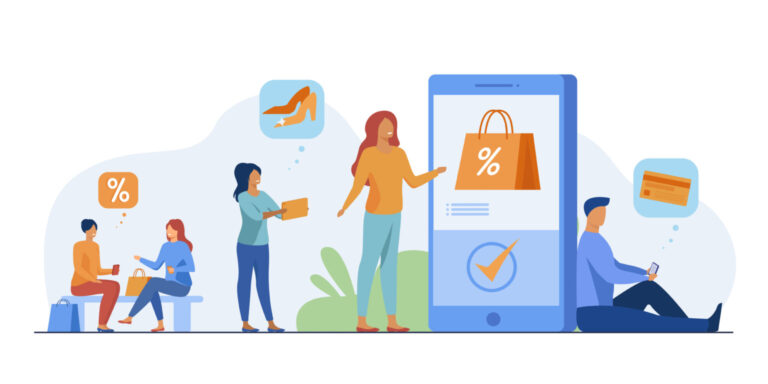Discover the top 5 signs your e-commerce site needs AI-driven personalization. Learn how AI can enhance user experience, boost sales, and improve customer engagement
Introduction
In the competitive landscape of e-commerce, providing a personalized shopping experience is no longer optional—it’s essential. AI-driven personalization leverages artificial intelligence to tailor content, recommendations, and interactions to individual customer preferences and behaviors. This article highlights five key signs that indicate your e-commerce site could benefit significantly from AI-driven personalization, helping you enhance user experience and drive revenue growth.
Sign 1: High Bounce Rates and Low Engagement
Understanding Bounce Rates
A high bounce rate indicates that visitors leave your site without interacting beyond the initial page. This is often a sign that the content or user experience isn’t resonating with them. Low engagement metrics, such as short session durations and minimal interaction, further highlight a disconnect between what users expect and what they find on your site.
Role of Personalization in Engagement
AI-driven personalization can significantly enhance user engagement by delivering relevant content and experiences based on individual user behavior and preferences. Examples include:
- Dynamic Content: Adjust on-site content in real-time to match user interests.
- Personalized Recommendations: Suggest products and content that align with the user’s browsing history and preferences.
Benefits:
Increased Interaction: Personalized experiences encourage users to explore more.
- Reduced Bounce Rates: Relevant content keeps users engaged longer.
Struggling with High Bounce Rates? See How AI Can Help
Sign 2: Low Conversion Rates
Analyzing Conversion Challenges
Low conversion rates suggest that visitors aren’t finding what they need or aren’t compelled to make a purchase. This can be due to a lack of relevant recommendations, confusing navigation, or unappealing product displays.
How AI Personalization Boosts Conversions
AI-driven personalization enhances conversions by tailoring the shopping experience to individual user preferences. Key strategies include:
- Behavioral Analysis: Use AI to understand user behavior and adjust product recommendations accordingly.
- Targeted Offers: Provide personalized discounts or promotions based on user activity.
Benefits:
- Higher Relevance: Personalized recommendations align with user interests, increasing the likelihood of a purchase.
- Streamlined Experience: Simplifying the shopping process with personalized navigation and offers improves conversion rates.
Not Converting Visitors into Customers? Boost Sales with AI Personalization
Sign 3: Ineffective Product Recommendations
Common Issues with Manual Recommendations
Manual product recommendations often fail to capture the nuances of individual customer preferences, leading to irrelevant suggestions and missed sales opportunities. Common issues include:
- Generic Recommendations: Providing the same recommendations to all users without considering individual preferences.
- Outdated Suggestions: Recommendations based on outdated or incomplete data.
AI-Driven Solutions
AI-driven product recommendations use machine learning algorithms to analyze customer data and provide relevant suggestions in real-time. Features include:
- Real-Time Updates: Continuously refine recommendations based on current user behavior.
- Personalized Algorithms: Tailor recommendations to each user’s unique preferences and past interactions.
Benefits:
- Increased Relevance: AI ensures that recommendations are tailored to the individual, improving engagement.
- Improved Sales: Relevant suggestions encourage customers to explore more products and make additional purchases.
Tired of Ineffective Product Recommendations? Let AI Find the Perfect Match for Your Customers
Sign 4: High Cart Abandonment Rates
Factors Contributing to Cart Abandonment
High cart abandonment rates can result from various factors, such as unexpected costs, complicated checkout processes, or irrelevant product suggestions. Customers often abandon carts if they feel uncertain about their purchase or if the checkout experience is too cumbersome.
Reducing Abandonment with AI
AI-driven personalization can help reduce cart abandonment by:
- Personalized Checkout: Simplify the checkout process with personalized forms and options.
- Abandoned Cart Reminders: Use AI to send timely reminders with personalized incentives to complete the purchase.
Benefits:
Increased Completion Rates: Personalized checkout experiences streamline the process, reducing friction.
- Re-Engagement: Abandoned cart reminders with personalized offers encourage customers to return and complete their purchase.
Losing Sales Due to Cart Abandonment? AI Can Help Recover Lost Revenue
Sign 5: Lack of Customer Retention
Signs of Poor Retention
Indicators of poor customer retention include low repeat purchase rates, declining customer engagement over time, and a lack of customer loyalty. Retaining customers is crucial for long-term revenue growth and profitability.
Enhancing Retention with Personalized Experiences
AI-driven personalization enhances customer retention by:
- Loyalty Programs: Use AI to tailor loyalty rewards based on individual customer behavior.
- Personalized Follow-Ups: Send personalized follow-up emails and offers to re-engage past customers.
Benefits:
- Increased Loyalty: Personalized experiences and rewards foster a stronger connection with customers.
- Higher Lifetime Value: Retained customers typically spend more over time, boosting their lifetime value.
Want to Build Lasting Customer Loyalty? AI Personalization is the Key
Implementing AI-Driven Personalization
Choosing the Right AI Tools
Selecting the right AI tools is crucial for effective personalization. Consider tools that offer:
- Real-Time Personalization: Provide dynamic content and recommendations based on real-time data.
- Behavioral Analytics: Analyze customer behavior to inform personalization strategies.
- Integration Capabilities: Ensure the tool integrates seamlessly with your existing e-commerce platform and marketing stack.
Recommended Tools:
- Dynamic Yield: AI-driven personalization for product recommendations and content delivery.
- Nosto: Provides real-time personalization for e-commerce.
Best Practices for Implementation
Follow these best practices to implement AI-driven personalization effectively:
- Start with Clear Objectives: Define what you want to achieve with personalization, such as increasing AOV or reducing cart abandonment.
- Test and Optimize: Continuously test and refine your personalization strategies based on performance data and customer feedback.
- Ensure Privacy Compliance: Implement robust data privacy practices to build and maintain customer trust.
Future Trends in AI Personalization for E-commerce
Stay ahead by adopting emerging technologies in AI personalization:
- Voice Commerce: Integrate voice assistants for personalized shopping experiences via voice commands.
- Augmented Reality (AR): Use AR to offer interactive and personalized product experiences.
Adapting to Consumer Expectations
Adapt your personalization strategies to evolving consumer expectations:
- Omnichannel Personalization: Provide a seamless personalized experience across online, mobile, and in-store channels.
- Ethical AI Practices: Ensure transparency and ethical use of AI to build customer trust.
FAQs
What are the signs that my e-commerce site needs AI-driven personalization?
Key signs include high bounce rates, low engagement, low conversion rates, ineffective product recommendations, high cart abandonment rates, and poor customer retention.
How can AI personalization increase revenue?
AI personalization increases revenue by providing relevant product recommendations, improving engagement, boosting conversion rates, and enhancing customer retention.
What tools are recommended for AI-driven personalization?
Recommended tools include Dynamic Yield for AI-driven product recommendations and Nosto for real-time personalization in e-commerce.
How can I ensure customer trust while using AI personalization?
Maintain customer trust by being transparent about data practices, ensuring compliance with privacy regulations, and providing opt-out options for personalized experiences.
What are the best practices for implementing AI personalization?
Best practices include starting with clear objectives, testing and optimizing strategies, and ensuring robust data privacy practices.
What future trends should I watch for in AI personalization?
Future trends include voice commerce, augmented reality, omnichannel personalization, and ethical AI practices.
Conclusion
AI-driven personalization is essential for enhancing user engagement, boosting sales, and improving customer retention in e-commerce. By recognizing the signs that your site needs AI personalization and implementing effective strategies, you can create a tailored shopping experience that resonates with customers and drives revenue growth. Embrace AI-driven personalization to stay competitive and achieve long-term success in the dynamic e-commerce landscape. Schedule a Demo to See AI Personalization in Action


